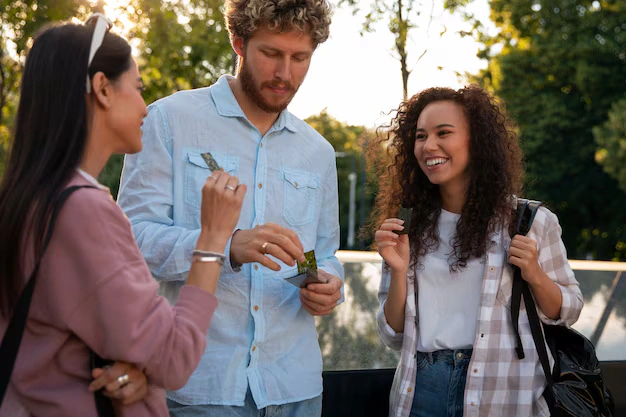Educational group trips are an essential component of education. They provide insightful opportunities for students to develop the skills needed to work in teams, understand other cultures, and think critically. These trips offer real-life experiences, making education more exciting and relevant.
However, for schools and universities and other less-prominent, smaller organizations with limited funding, planning such trips may be expensive. The challenge is making it affordable while not compromising on the educational, culinary or experiential aspects of the trip.

This article would present new ideas that can considerably reduce the expenses while keeping the journey a close-to-overall outcome for all adventurers.
Budget-Friendly Travel Ideas
Choose inexpensive and value-effective places when you focus on trip for education. If you can avoid pricier cities like London and Paris, choose a lesser-known one, like Tbilisi, Georgia, or Porto, Portugal. These sites to visit are affordable yet full of culture and history to visit. In addition, traveling during off-peak seasons can reduce costs. Time your travel, for example, April-May or September-October. Flights are less expensive, and too many sites to list offer group discounts.
Also consider holidays that the local schools observe. There’ll be fewer tourists in town when you travel when schools are in session locally. This is useful for negotiating better rates for accommodations and for booking tours in groups. You could also partner with local universities or cultural organizations. Some offer free or discounted access to educational websites. Local students or cultural ambassadors can be your group leaders. And although these guides can still provide valuable perspectives, they are often less expensive than serious guides.
Cost-Effective Accommodation Tips
1. Unique Group Accommodation Options
Move away from boutique hotels, rent a historic building, or an estate. You could spend the night in a converted monastery in Italy or a castle in Scotland. These places often give discounts for groups and an opportunity to get up close with history. An alternative is renting university student apartments or dorms. These are cheaper than the others, especially during off-season when these are not being used, and also give your group an opportunity to experience what the local student lives look like.
2. Affordable Lodging with Educational Value
Look for local-based hui, like community eco-lodges or guesthouses owned by the local community. These options help you learn more about the area’s culture and history while creating a sustainable tourism footprint. They are also usually cheaper than hotels. If you are traveling in a larger group, a hostel is great. This helps keep hostels cheap and social for everyone—most offer group services and private dorms too.
Affordable Transportation Tips
There are many avenues for lowering transportation costs.” There are also group travel opportunities on longer trips the Eurail Pass, for instance, which covers interrail trips through Europe, or the Japan Rail Pass. Great for educational groups! If you are traveling locally, renting a private bus or coach can be more cost-effective than purchasing individual tickets. Or numerous bus companies offer group discounts.

Public transport and local transport are cheap as well. A number of cities have group rates and/or tourist passes. They provide free admission to museums and attractions. They also allow travelers to ride an unlimited number of buses, trams and subways. For the more musically inclined, guided walking tours can also be arranged using apps such as Google Arts & Culture or Rick Steves Audio Tours. This means the group is given free rein to tour at its own pace without paying any guides.
Free and Low-Cost Learning Activities
Education doesn’t always have to be expensive. There are many inexpensive ways to give students great experiences. These activities facilitate learning through fun and engagement. Here are a few tips for keeping learning both fun and accessible:
- A lot of museums and historical sites have free days. For example, entry to the Louvre is free the first Sunday of every month. In the United States, National Museum Day also offers free entry to numerous museums.
- You can bring local writers, craftspeople or historians into your home to give lectures or performances. For instance, a pottery maker in Mexico or a dancer in Greece can, at little to no cost, deliver lessons to students about their area’s culture.
- In addition to these excursions, local workshops such as weaving in Ecuador or cooking in Morocco allow students to learn new skills and experience local culture. These kinds of workshops are usually less expensive than guided tours but provide a more authentic and enjoyable experience.
- A good alternative is to learn by volunteering. Students can pitch in with archaeological digs in Peru or environmental work in Kenya. Most of these programs are free, and they are very good learning experiences.
Creative Fundraising and Sponsorships
Be creative, and you may be surprised by the success of your educational travel campaign. One way to raise funds is through crowdfunding platforms such as Kickstarter or GoFundMe. Be sure to tell a great story about the trip and how it is going to help students learn, and offer small rewards for donations, like postcards or a group picture. It also both helps to attach the fundraiser to individual learning objectives, whether it be a new language or a history project, so that those who contribute feel more ownership of the trip.
Another alternative is going to businesses that have an interest in education, perhaps some tech companies, or local organizations that may be willing to sponsor you. In return, you can provide them with promotion opportunities during the trip. The National Geographic Society and the Fund for Teachers also offer educational grants. With the help of these grants, it can be easier to bring the educational experience to life by supporting travel for teachers and students.
Keeping the Group Engaged and Accountable
You must keep everyone engaged and accountable to each other for the success of the trip. One way to do this is to involve students in the planning. They can check on things to do and see nearby. This made them feel more responsible for their learning and connected them to the trip. The fact that you do not need to hire expensive agencies to organize the activities also saves you money.

One more tactic to help keep the group engaged is to encourage participants to set their own budgets. Students need to budget for personal expenses, such as eating out and shopping. Expensive trips should be justified by group learning opportunities. You can help by offering workshops on how to budget for travel. This will allow everyone to keep on track with their budgets and allow them to focus even more on the educational activities.
Conclusion
In conclusion, smart choices and careful planning are required to plan an affordable educational trip. You can keep costs low while still providing a valuable learning experience by utilizing local resources, being creative, and involving students in the process. High-quality education is not always dependent on a large budget.
These are just a few of the tactics you can use to help you deliver enriching experiences. Feel free to use these as tips for any future trip planners. You can create a well-executed and innovative trip that will be memorable and budget-friendly. If the price is appropriately balanced against the educational value offered, students should return home with a great story and no credit card debt.